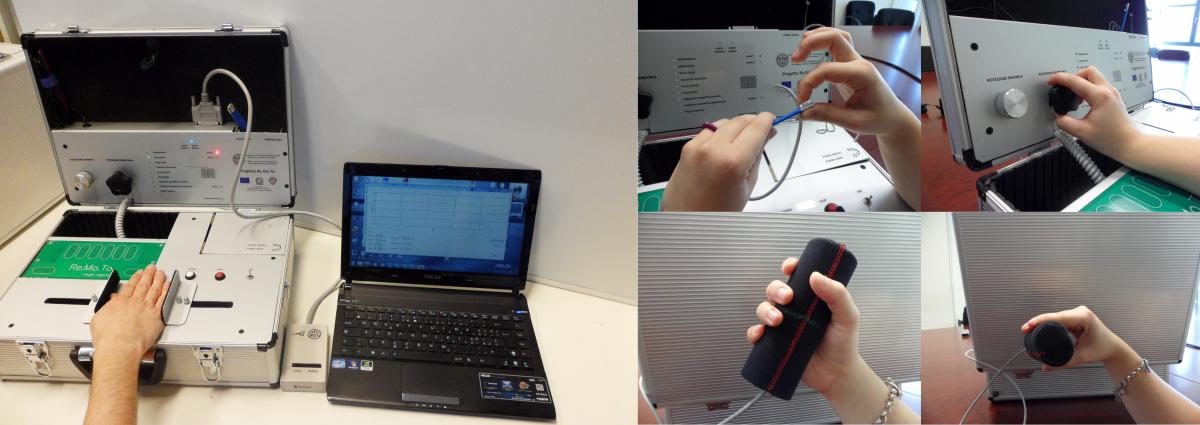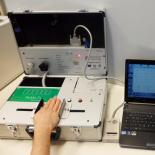FlexiForce™ Sensors Improve Hand Rehabilitation Device
In 2013, a group of bioengineers and rheumatoid specialists in Cagliari, Italy designed a low-cost medical device that monitors the hand rehabilitation of patients diagnosed with Rheumatoid Arthritis (RA) and Systemic Sclerosis (SS). The device consists of sensorized tools, using FlexiForce™ sensors, that can be used either in an outpatient clinic or in a patient’s home. Clinicians strongly advise pharmacological treatment partnered with kinesiotherapy, to help improve rheumatic patients’ quality of life. According to the American Kinesiotherapy Association, kinesiotherapy is "the application of scientifically based principles to design specific exercises aimed to enhance the strength, endurance, and mobility of individuals with functional limitations, which require extended physical conditioning."
FlexiForce sensors are designed into this medical device to provide force feedback data to the clinician and patient. This tool provides a simple and objective monitoring of a patient's rehabilitation sessions and progress. The design of the device centers around seven hand exercises tailored for RA and SS patients' rehabilitation. These seven exercises include: hand pinch, hand grip, finger pinch (opposition to the thumb), isometric rotation, hand extension, rotation (fast manipulation), and finger tapping. FlexiForce A201 sensors were used specifically in the hand pinch, isometric rotation, hand grip, and finger pinch applications. The sensor measures the force applied by the patient. This information is then relayed through custom software and evaluated by the clinician.
 Rehabilitation Device & Hand Exercises Utilizing FlexiForce Sensors
Rehabilitation Device & Hand Exercises Utilizing FlexiForce Sensors
Researchers used the device in a study of 20 patients diagnosed with RA and SS. This device helped yield positive rehabilitation results, patients saw an increase in hand strength, endurance, and agility after only 12 weeks. This tool proves to be an effective, user-friendly device useful for assessing hand disabilities in rheumatic patients and helping to monitor the rehabilitation of patients with such hand disabilities. Patients who cannot access specialized medical centers now have access to a portable, low-cost rehabilitation tool they can use in the comfort of their own home.
Benefits of FlexiForce Sensors
- Ultra-thin sensor construction and flexibility means minimal interference/disturbance to normal action
- Accurate response gives your customers and end users confidence in the performance of your product
- Knowledgeable, experienced technical staff help you develop the most effective, economical sensor based on your specific requirements. All manufacturing takes place at ISO 9001 compliant & 13485 registered Tekscan headquarters.
- 100% factory inspection ensures your sensors meet established performance specifications
Getting Started with FlexiForce Sensors
FlexiForce sensors are available off-the-shelf in packs of four or eight for testing and prototyping. Visit our online store to place an order, or contact us to discuss customization options with one of our engineers.
Further Details: Danilo Pani et al. "A Device for Local or Remote Monitoring of Hand Rehabilitation Sessions for Rheumatic Patients," IEEE Journal of Translational Engineering in Health and Medicine, vol.2, pp.1,11, 2014



